News
At the SEAS Design and Project Fair earlier this month, seven students were chosen for the ES100 Dean’s Award for Outstanding Engineering Projects. ES100 is a year-long capstone course for seniors in the SB engineering program, where each student develops a creative project to address a real-world engineering problem.
In the 2021-2022 academic year, 43 students completed ES100 engineering projects. The Dean’s Award for Outstanding Engineering Projects comes with a prize of $500.
2022 Winners
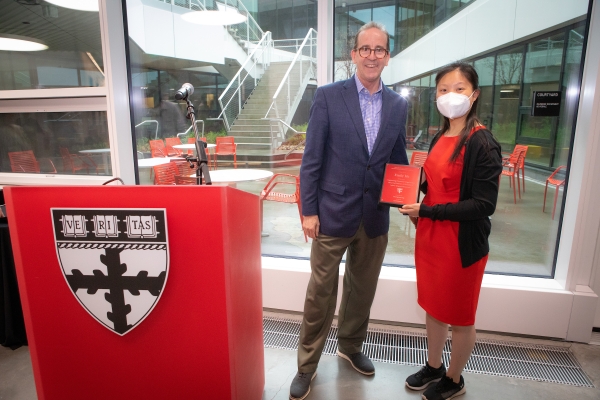
Emily He, for her project “Engineering Ultrasound-Triggered Red Blood Cell Delivery of Thrombin to Induce Targeted Hemostasis”. This project engineers red blood cell carriers to deliver a payload of thrombin upon targeted activation by ultrasound. She was advised by Sol Schulman.
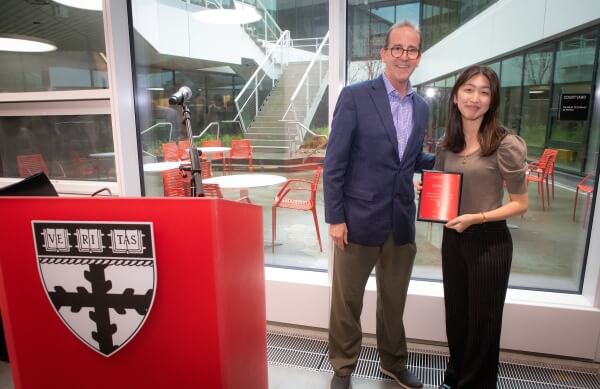
Esther Koh, for her project, “Biomimetic and Biodegradable Adhesive Hydrogels for Tendon Immunomodulation.” For her project, Koh synthesized a biomimetic, biodegradable tough adhesive hydrogel scaffold that can recruit and accumulate macrophages locally to the injured tissue. Her study reports the first degradable, fiber-reinforced tough adhesive hydrogel scaffold for immune cell recruitment, polarization, and proliferation to facilitate tendon healing. She was advised by Prof. David Mooney.
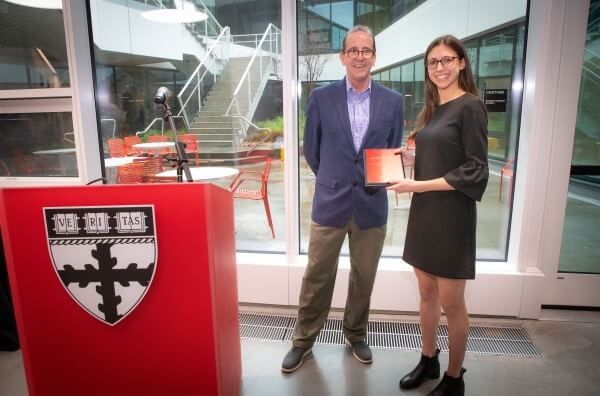
Arielle Rothman, for her project, “Apple Watch Integrated Blood Pressure Monitor.” In this project, Rothman designed and built an Apple Watch-integrated monitor that enables users to take blood pressure measurements through a custom watch band. The device measures blood pressure by inflating the band to occlude blood flow, and then deflating it and recording pressure oscillations that occur as blood flow resumes. The system is comfortable, user friendly, and provides accurate BP readings to facilitate improved hypertension control. She was advised by Ellen Roche.
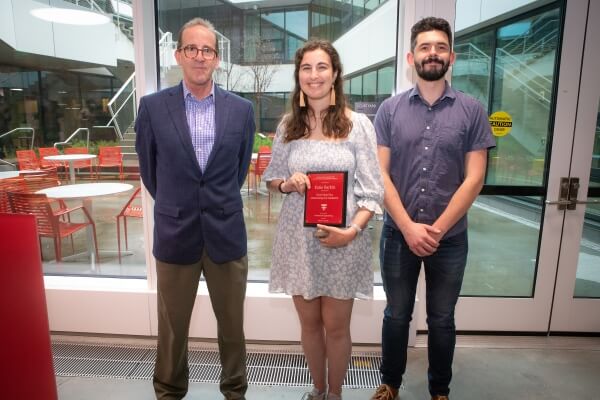
Katie Barkin for her project “Good Clean Fun: Modernizing Toy Sanitation.” Barkin’s project seeks to improve classroom safety through a device that uses far ultraviolet light to sanitize toys. Her novel device, which improves on existing UV sanitation technologies, focuses on complete coverage of surfaces and minimizes required user interaction time. She was advised by Steve Coresa.
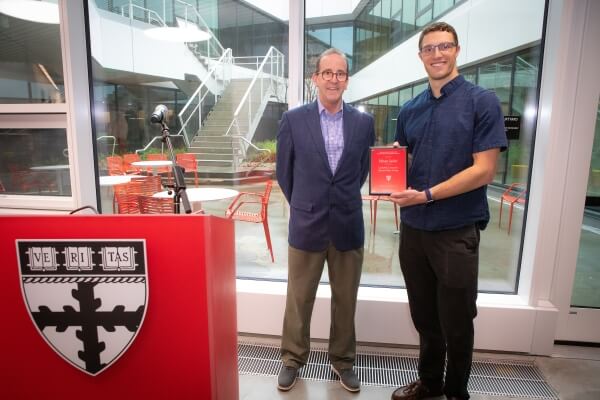
Ethan Seder, for his project, “CrashPak: Consumer Bicycle Safety Airbag.” CrashPak is an airbag for cyclists, conveniently integrated into a backpack. In the event of an accident, CrashPak inflates a protective airbag to distribute the high impact forces over a greater area and duration, thereby decreasing the severity of injury. The solution consists of an algorithm that monitors a rider's movements and reliably detects accidents; a gas release mechanism that rapidly punctures gas storage canisters; and a textile airbag that deploys from backpack shoulder straps and protrudes outwards. Seder’s device successfully inflates within 270 milliseconds and reduces peak impact force by 94%. He was advised by Tommaso Proietti.
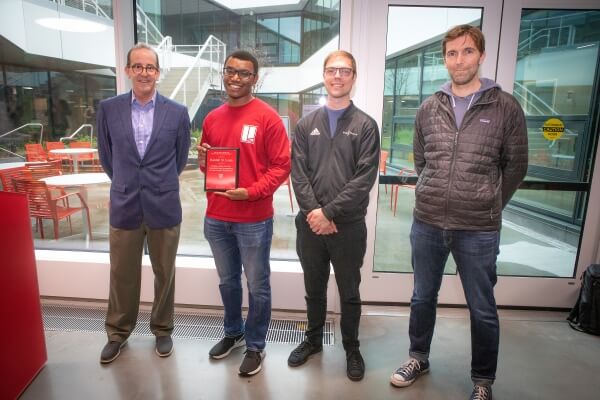
Randall St. Louis for his project, “Morpheus Hand: Actively-Controlled Finger Arrangement for Soft Robotic Manipulation.” As robots enter the real world, there is a need for robotic hands that can manipulate a wide variety of items regardless of shape or size. In his work, St. Louis engineered a soft robotic hand with the ability to actively change finger arrangements based on item geometry. In addition to a soft robotic hand with a new degree-of-freedom, St. Louis developed a robotic grasping pipeline that uses preloaded item geometric characteristics to make the best finger arrangement choice for an arbitrary item. He was advised by Prof. Rob Wood and Clarke Teeple.
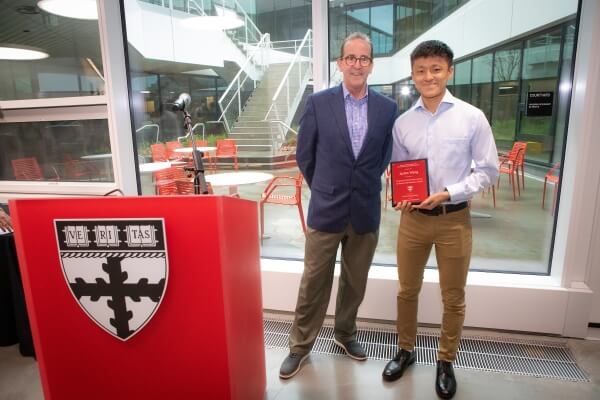
Jaylen Wang, for his project, “Designing a Tool for Deep Learning Accelerator Fault Resilience Analysis.” Wang’s thesis aims to develop a novel resilience analysis framework targeting deep neural network accelerator design. Previous studies have shown that random errors in deep neural network hardware can have harmful consequences for accelerators deployed in safety-critical settings, like autonomous vehicles. The proposed framework allows for resilience analysis that accounts for an accelerator's dataflow, which defines how data is moved within its memory hierarchy, giving accelerator designers early insights into how their design decisions affect resilience. He was advised by Abdulrahman Mahmoud.
Cutting-edge science delivered direct to your inbox.
Join the Harvard SEAS mailing list.